In the following figure the pulley P1 is fixed and the pulley P2 is movable. If W1=W2=100 N , what is the angle AP2P1 ? The pulleys are frictionless.
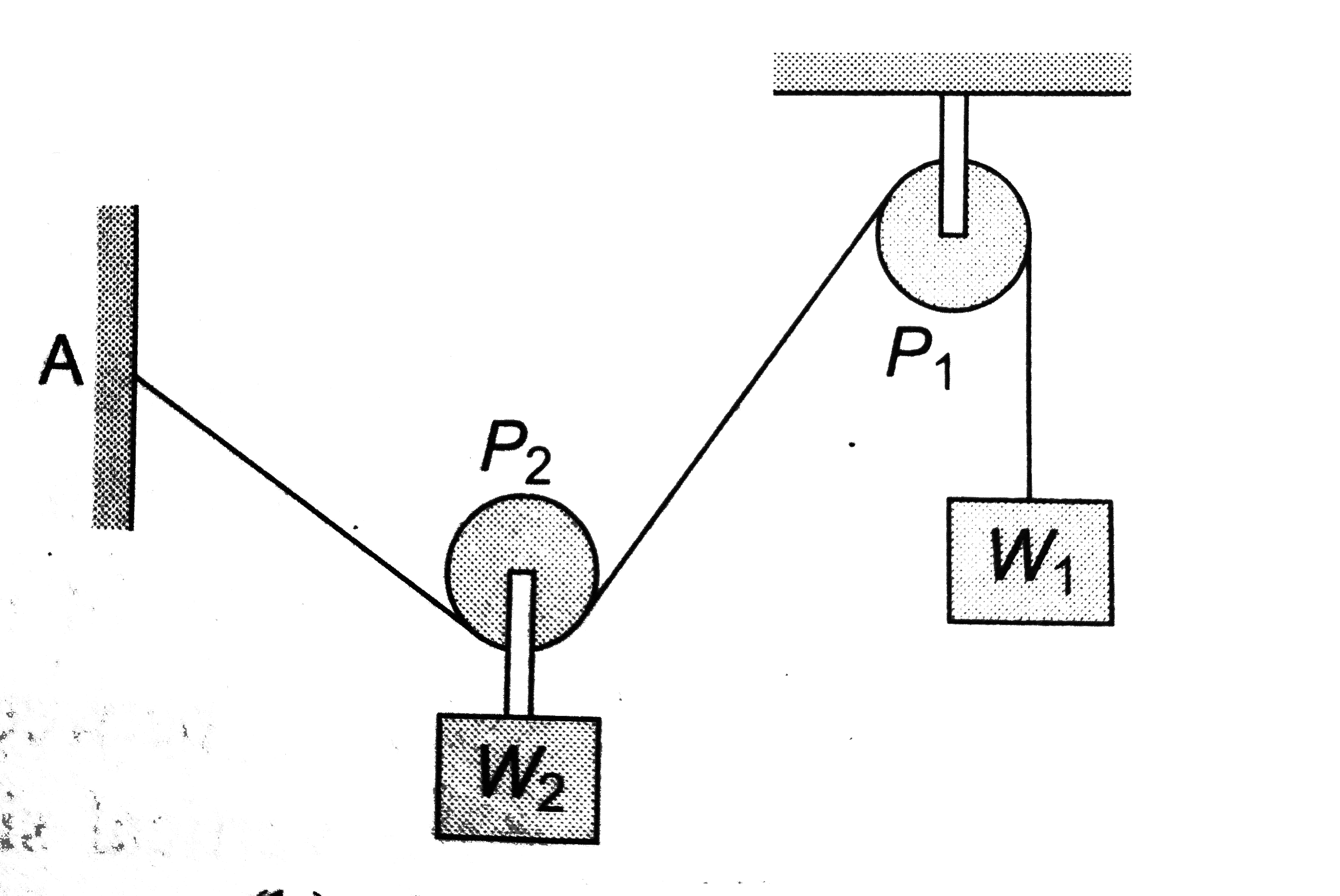
30∘
60∘
90∘
120∘
The correct Answer is:D
2Wcosθ=W2
implies 2×100cosθ=100
implies cosθ=12 implies θ=60∘=2θ=120∘ 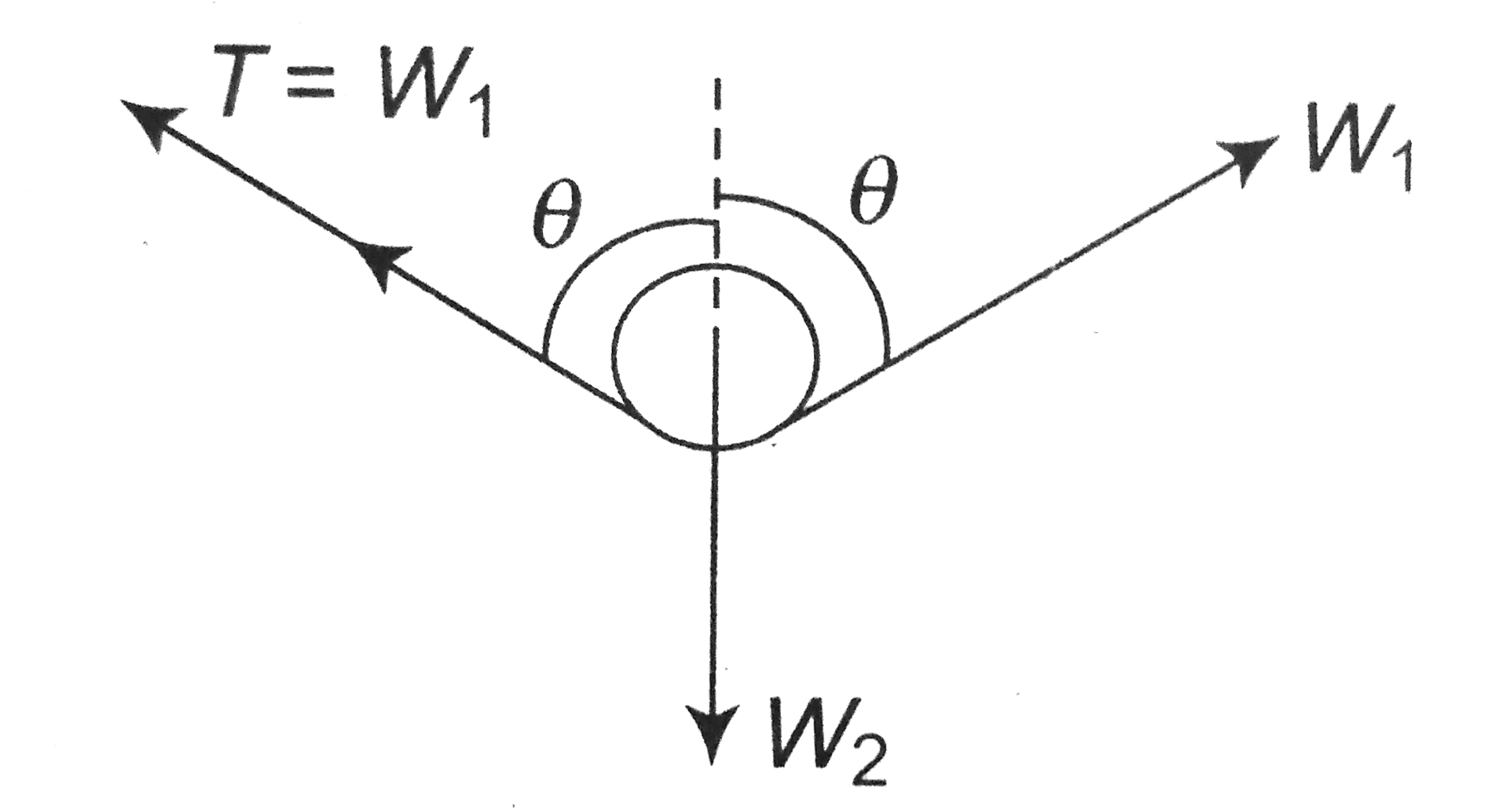
Topper's Solved these Questions
- BOOK - A2ZCHAPTER - NEWTONS LAWS OF MOTIONEXERCISE - Applications Of Newton'S Laws Of Motion33videos
NEWTONS LAWS OF MOTION
- BOOK - A2ZCHAPTER - NEWTONS LAWS OF MOTIONEXERCISE - Basic Concept Of Static And Kinetic Frictions45videos
NEWTONS LAWS OF MOTION
- BOOK - A2ZCHAPTER - NEWTONS LAWS OF MOTIONEXERCISE - Linear Momentum And Impulse20videos
NEWTONS LAWS OF MOTION
- BOOK - A2ZCHAPTER - MOTION IN TWO DIMENSIONEXERCISE - Chapter Test29videos
MOTION IN TWO DIMENSION
- BOOK - A2ZCHAPTER - OSCILLATION AND SIMPLE HARMONIC MOTIONEXERCISE - Chapter Test29videos
OSCILLATION AND SIMPLE HARMONIC MOTION
Similar Questions
The following figure shows the combination of a movable pulley P1 with a fixed pulley P2 used for lifting up a load W.

State function of fixed pulley P2.View SolutionThe arrangement shown in figure is in equilibrium with all strings vertical. The end A of the string is tied to a ring which can be slid slowly on the horizontal rod. Pulley P1 is rigidly fixed but P2 can move freely. A mass m is attached to the centre of pulley P2 through a thread. Pulleys and strings are mass less.
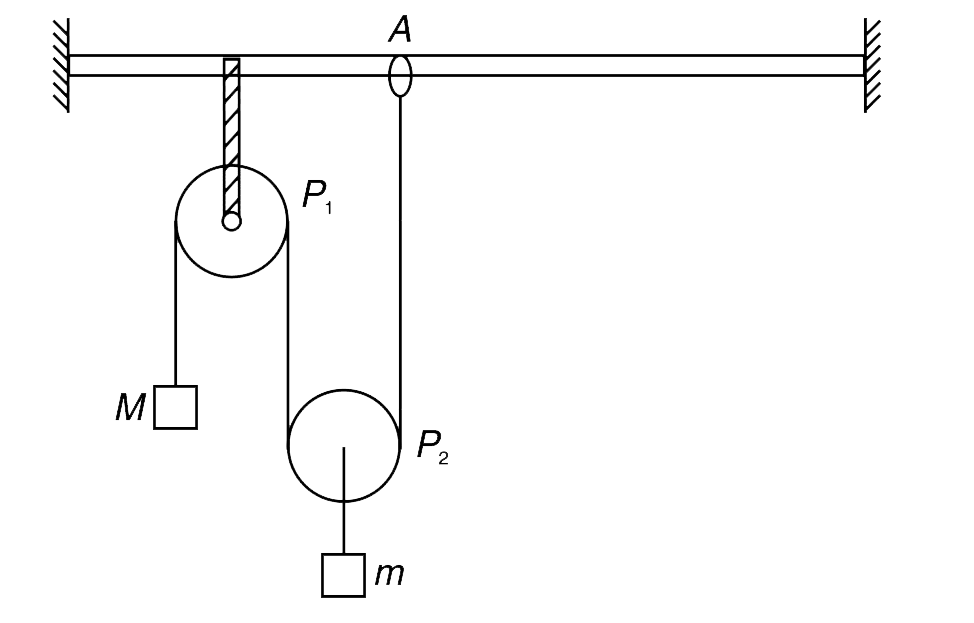
(a) Which block will move up as A is moved slowly to the right?
(b) Will the block of mass m have horizontal displacement?
(c) Is it possible, for a particular position of A, that M has no acceleration but m does have an acceleration? If this happens when string from P2 to A makes an angle θ with vertical, find the acceleration of m at the instant.View Solution
Knowledge Check
- Question 1 - Select One
In the figure find the speed of pulley P
 Av2B2vcosθC−2vcosθDv2sinθ
Av2B2vcosθC−2vcosθDv2sinθ - Question 2 - Select One
In the system shown in fig the pulley is frictionless and the string massless if m1=m2 thrust on the pulley will be:
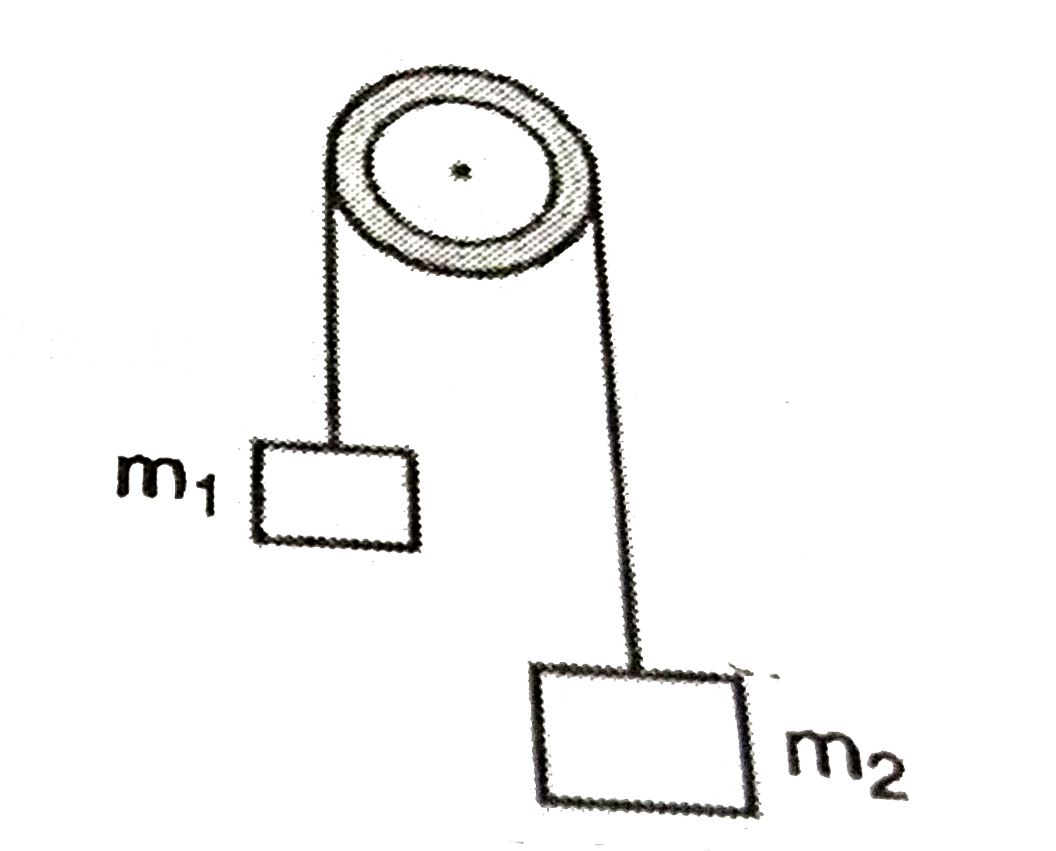 Aless than(m1+m2)gBgreater than(m1+m2)gCequal to (m1+m2)gDnone of the above
Aless than(m1+m2)gBgreater than(m1+m2)gCequal to (m1+m2)gDnone of the above - Question 3 - Select One
In the situation shown in figure F=500 newton applied on the pulley m1=50kgandm2=10kg and pulley and strings are massless and frictionless. Then the acceleration of the pulley is : [g=10m/s2]
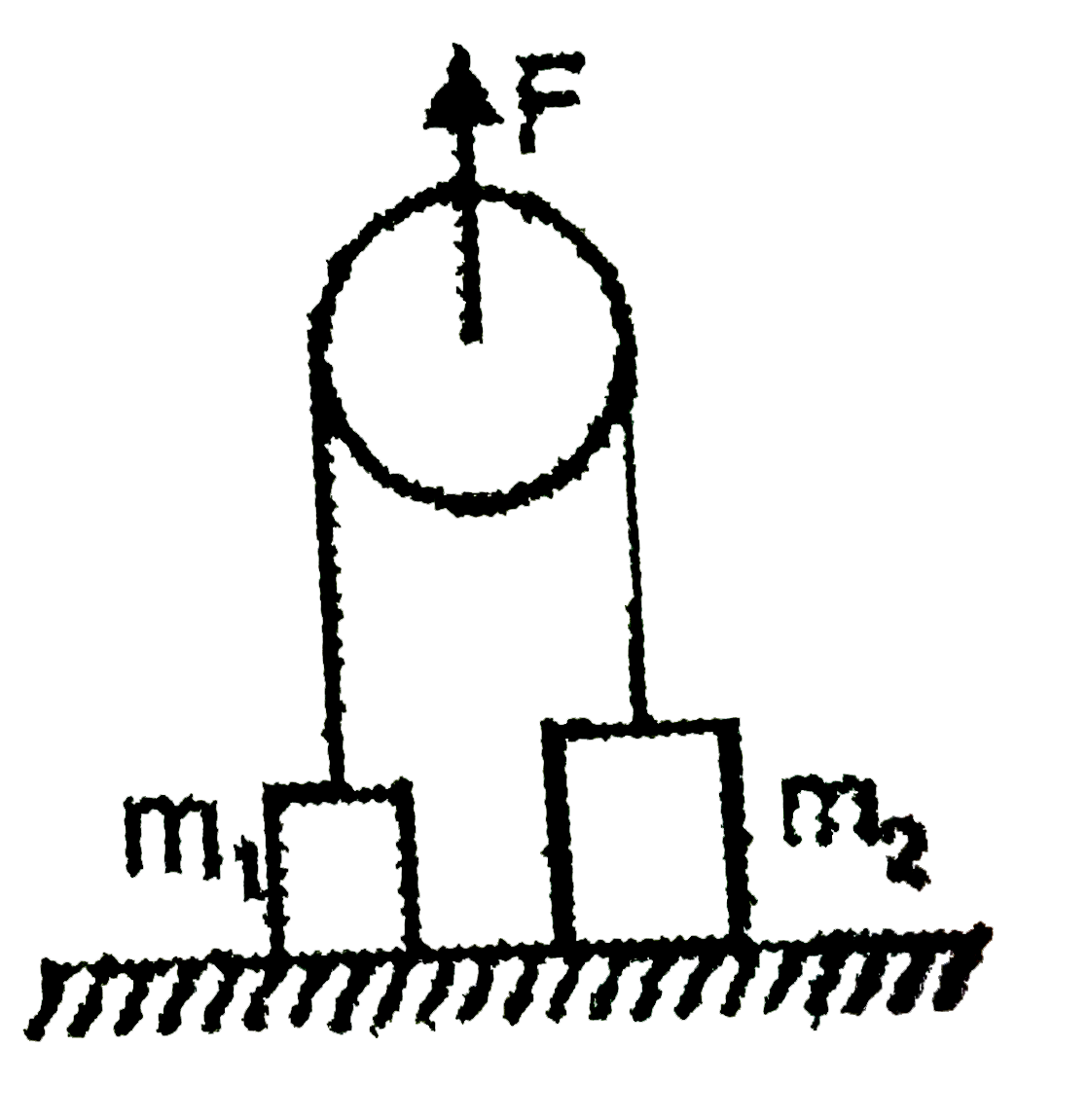 A15m/s2B27.5m/s2C40m/s2D7.5m/s2
A15m/s2B27.5m/s2C40m/s2D7.5m/s2
The following figure shows the combination of a movable pulley P1 with a fixed pulley P2 used for lifting up a load W.

State function of fixed pulley P2.View SolutionThe following figure shows the combination of a movable pulley P1 with a fixed pulley P2 used for lifting up a load W.
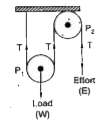
If the free end of the string moves through a distance x, find the distance by which the load W is raised.View SolutionA situation is shown in figure-2.15, Find the acceleration of masses m1 abd m2 mass of pulley is mP. Consider the string going over the pulley is massless and frictionless.
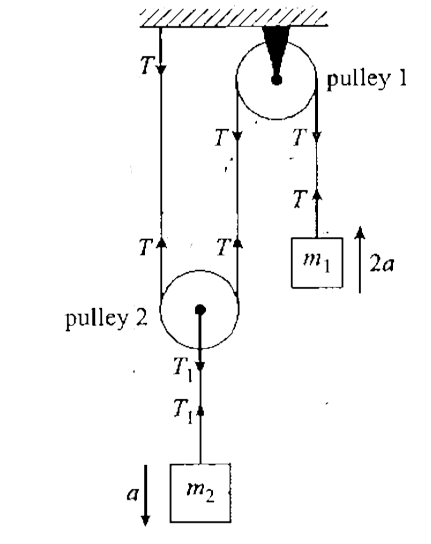 View Solution
View SolutionIn the shown P1 and P2 are massless pulleys P1 is fixed and P2 can move Masses of A,B and C are 9m642m amd m respectively All contacts are smooth and the string is massless θ=tan−1(34) (Take g=10m/s2)
The tension in string connecting pulley P2 and block C is 13x Calculate x (Take m=1kg)
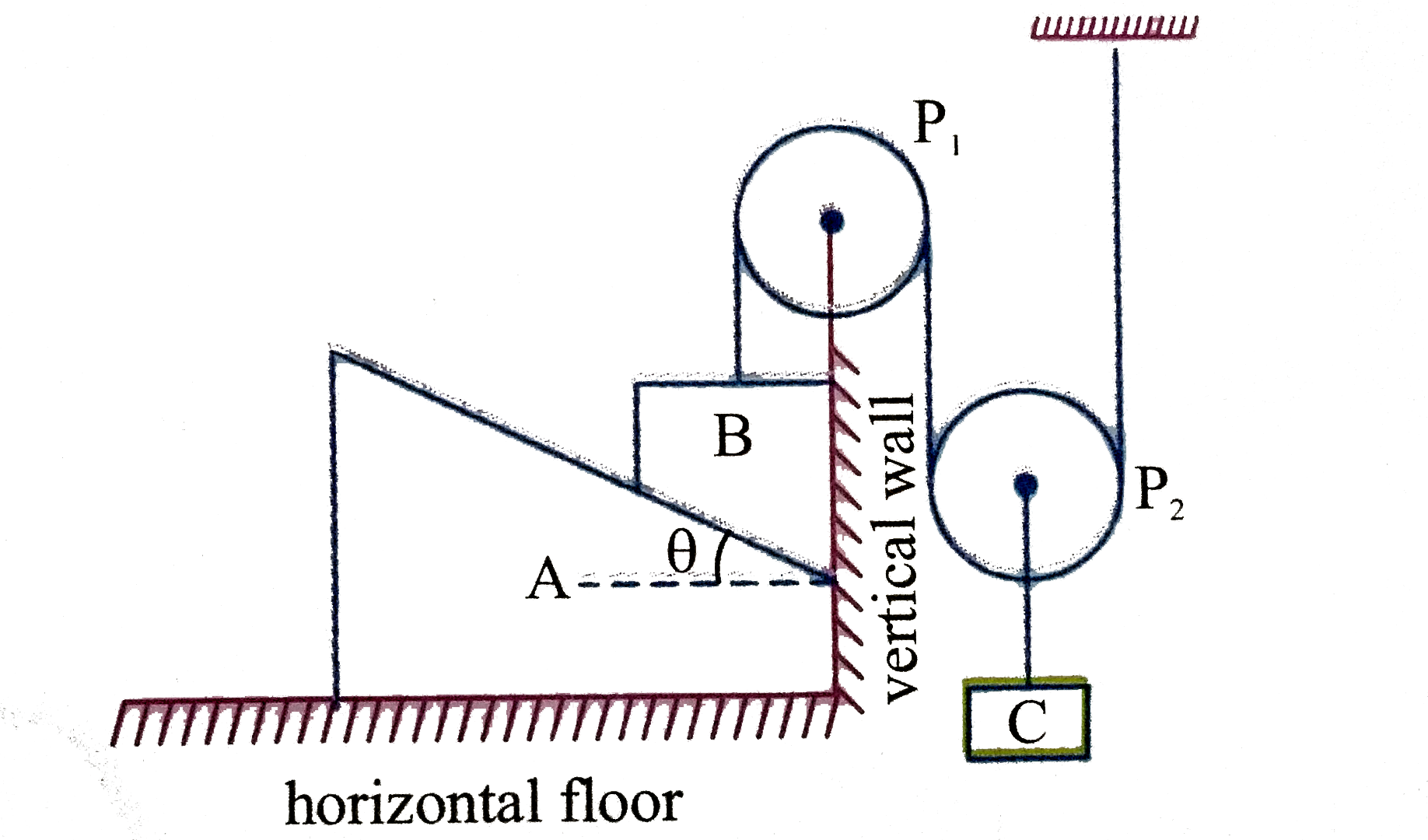 .View Solution
.View SolutionIn the system shown in the fig. there is no friction and string is light. Mass of movable pulley P2isM2. If pulley P1 is massless, what should be value of applied force F to keep the system in equilibrium?
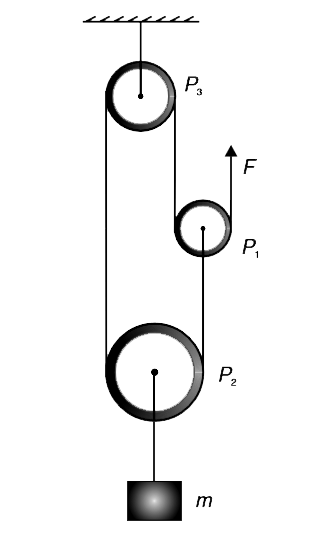 View Solution
View Solution

